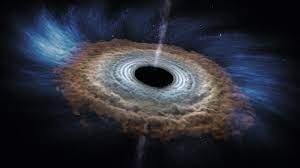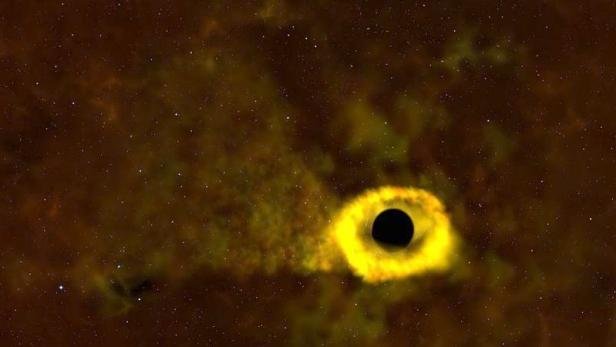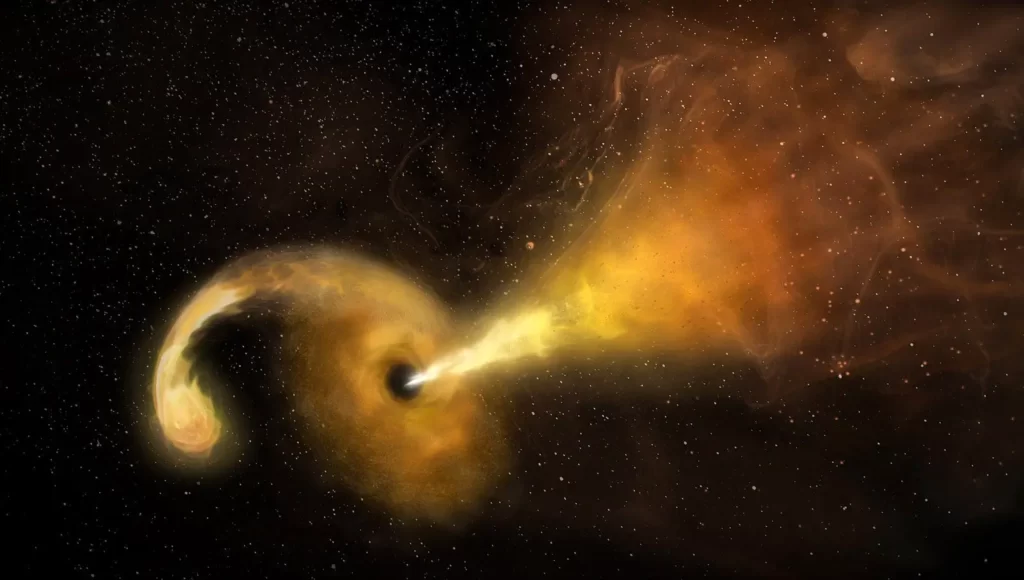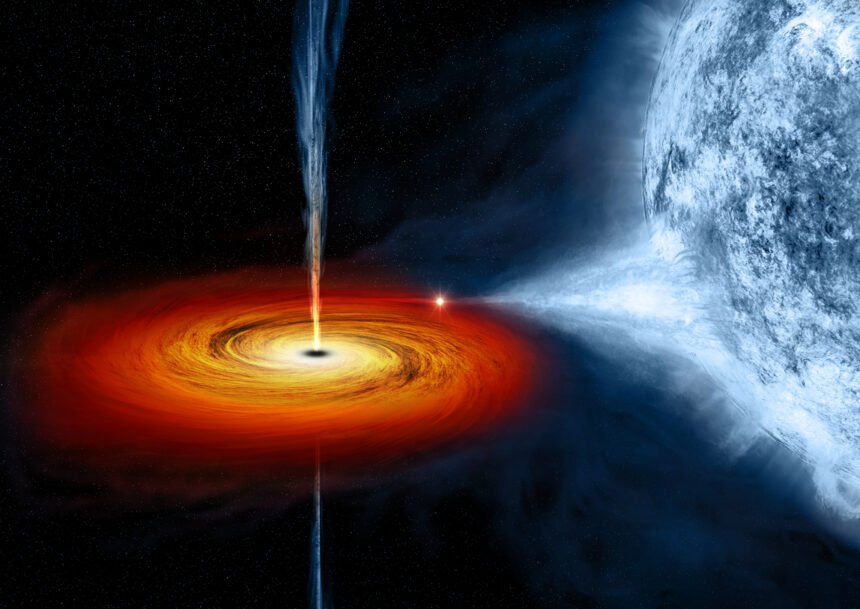In the vast expanse of the cosmos, there are celestial events that capture the imagination of both scientists and enthusiasts alike. One such awe-inspiring phenomenon currently being observed is the relentless destruction of a star by a voracious black hole. This cosmic dance of destruction provides invaluable insights into the workings of our universe and challenges our understanding of gravity and astrophysics.
Located millions of light-years away in a distant galaxy, this particular black hole, like many others, has been a subject of fascination for astronomers. However, it recently became the center of attention as it embarked on a cataclysmic journey, tearing apart a nearby star in a process known as “tidal disruption.”

The gravitational forces at play in the vicinity of a black hole are nothing short of staggering. As a star approaches too close to the black hole, it experiences a phenomenon known as “tidal forces.” These forces are so immense that they stretch and deform the star, causing it to resemble a spaghetti-like stream of matter. The intense gravitational pull from the black hole then begins to draw in and consume this shredded star.
Astronomers are utilizing cutting-edge telescopes and observatories to witness this cosmic spectacle unfold. By carefully monitoring the changes in brightness and radiation emitted from the vicinity of the black hole, they can piece together the story of this celestial destruction. These observations not only provide a window into the black hole’s appetite but also offer a unique opportunity to test the predictions of Albert Einstein’s theory of general relativity in extreme conditions.
One of the intriguing aspects of this event is the formation of an “accretion disk” around the black hole. This disk consists of the remains of the disrupted star and emits powerful X-rays as it spirals into the black hole. Studying the properties of this accretion disk can help astronomers understand the behavior of matter under the extreme conditions near a black hole.
Additionally, this cosmic spectacle has the potential to shed light on the mysterious phenomena of relativistic jets. These jets of high-energy particles are often observed blasting away from black holes at nearly the speed of light. Understanding their origin and behavior is a crucial puzzle in astrophysics.
The study of black hole tidal disruptions also has implications beyond the realm of astrophysics. It can help us gain insights into the dynamics of galaxies and their central supermassive black holes, which play a crucial role in shaping the cosmos as we know it.
As astronomers continue to monitor this captivating event, they are contributing to our ever-evolving understanding of the universe. Each data point collected and each observation made brings us closer to unraveling the mysteries of black holes, gravity, and the fundamental forces that govern the cosmos.

As astronomers meticulously observe the black hole’s feast on the star, they are not only expanding our knowledge of astrophysics but also addressing fundamental questions about the nature of space and time. One of the central pillars of our understanding of the cosmos is Einstein’s theory of general relativity, which describes how massive objects like black holes warp the fabric of spacetime. The extreme gravitational environment near a black hole, such as the one in this event, provides a unique laboratory to test the predictions of this theory.
For instance, scientists are keenly interested in studying the rate at which the star’s material is accreting onto the black hole and the X-rays emitted from the accretion disk. These observations can reveal information about the spacetime around the black hole, providing an opportunity to test whether it adheres to the predictions of general relativity or if there are deviations that could hint at new physics.
Moreover, the process of a black hole shredding a star is a remarkable manifestation of the relentless power of gravity. It serves as a vivid reminder that the universe is filled with extreme environments that challenge our understanding of physical laws. These cosmic phenomena push the boundaries of what we thought was possible, inviting us to revise and refine our models of the universe continually.

Beyond the realm of theoretical physics, the study of tidal disruptions has practical applications as well. Understanding the dynamics of black holes and their interactions with stars is crucial for cosmology, as it allows us to better comprehend the evolution of galaxies. Galaxies, including our own Milky Way, often harbor supermassive black holes at their centers, and the study of tidal disruptions can help us elucidate their role in shaping the structure and behavior of galaxies over cosmic timescales.
In addition to advancing our knowledge of black holes, this event serves as a testament to the power of scientific collaboration and technological innovation. Observing distant cosmic phenomena like this one requires a global effort, with astronomers and astrophysicists from around the world working together to collect and analyze data from a multitude of observatories and telescopes. It underscores the importance of international cooperation in unraveling the mysteries of the universe.
As we continue to witness the ongoing drama of a black hole shredding a star, we are not only spectators but active participants in the never-ending quest to comprehend the cosmos. The knowledge gained from such observations not only enriches our understanding of the universe but also inspires future generations to explore the wonders of space and science.
In conclusion, the ongoing observation of a black hole tearing a star to pieces is a profound and multifaceted scientific endeavor. It challenges our theories, expands our understanding of the cosmos, and showcases the remarkable achievements of human curiosity and technological innovation. This cosmic spectacle reminds us that the universe is a dynamic and mysterious place, offering countless mysteries for us to unravel in our pursuit of knowledge and discovery.




































